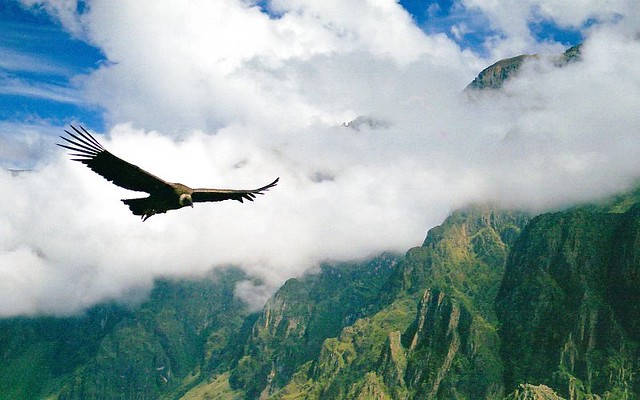In 1998, Peru and Ecuador settled a
long-running border dispute in the Cordillera del Cóndor mountain range that had killed and wounded dozens on both sides in 1995. In addition to pledging renewed cooperation on deciding the final placement of the border, the agreement, the Acta Presidencial de Brasilia, committed both sides to establishing extensive ecological protection reserves on both sides of the border: A
peace park of sorts was born.
But now, indigenous groups fear that extractive industries in the area could threaten both the biodiversity and the ecological integrity of the forests and streams that they rely upon for their survival. They detail these charges in a new report, Peru: A Chronicle of Deception, and in a new video documentary, “Amazonia for Sale.”
Located on the eastern slopes of the Equatorial Andes, the area is a recognized global biodiversity hotspot with large areas of pristine montane habitat. In 1993-4, Conservation International led a biodiversity assessment trip to the area and identified dozens of species new to science. Their report, The Cordillera del Cóndor Region of Ecuador and Peru: A Biological Assessment, noted the “spectacular” biodiversity of the area, and its key role in the hydrological cycle linking the Andes with the Amazon.
Recognizing the region’s importance, the Acta Presidencial de Brasilia stipulated the need to create and update mechanisms to “lead to economic and social development and strengthen the cultural identity of native populations, as well as aid the conservation of biological biodiversity and the sustainable use of the ecosystems of the common border,” wrote Martin Alcade et al. in the ECSP Report.
Indigenous communities in Peru are accusing the Peruvian government of reneging on those promises by allowing extractive industries extensive access to the region. They charge that the government gave in to gold mining interests who want to reduce the size of the protected area in the Cordillera del Cóndor. They also claim that the Peruvian government is violating promises made to include indigenous peoples in the governance and management of the area.
Carefully managing extractive activities was a key priority for Peru and Ecuador when they negotiated an end to their border dispute. A management plan for the area with strong protection for key biodiversity areas was supposed to ensure everyone’s interests.
However, Peru’s current president, Alan Garcia, has been aggressive in promoting extractive industries in Peru,to the point of inciting significant popular opposition among many indigenous peoples. Less than a year ago, protests over oil exploration in Amazonian lowlands city of Bagua killed and wounded dozens of Peruvians. This violence followed years of social conflict over mining development in a number of communities in Peru’s Andean highlands.
Earlier this decade, Peru made some progress in resolving extractive disputes. But Garcia’s strong promotion of the extractive sector in the face of indigenous opposition, like we currently see in the Cordillera del Cóndor region, suggests years of confrontations to come.
Tom Deligiannis is adjunct faculty member at the UN-mandated University for Peace in Costa Rica, and an associate fellow of the Institute for Environmental Security in The Hague.
Photo Credit: “El vuelo del condor, acechando a su presa,” courtesy of flickr user Martintoy.

 A Publication of the Stimson Center.
A Publication of the Stimson Center.







